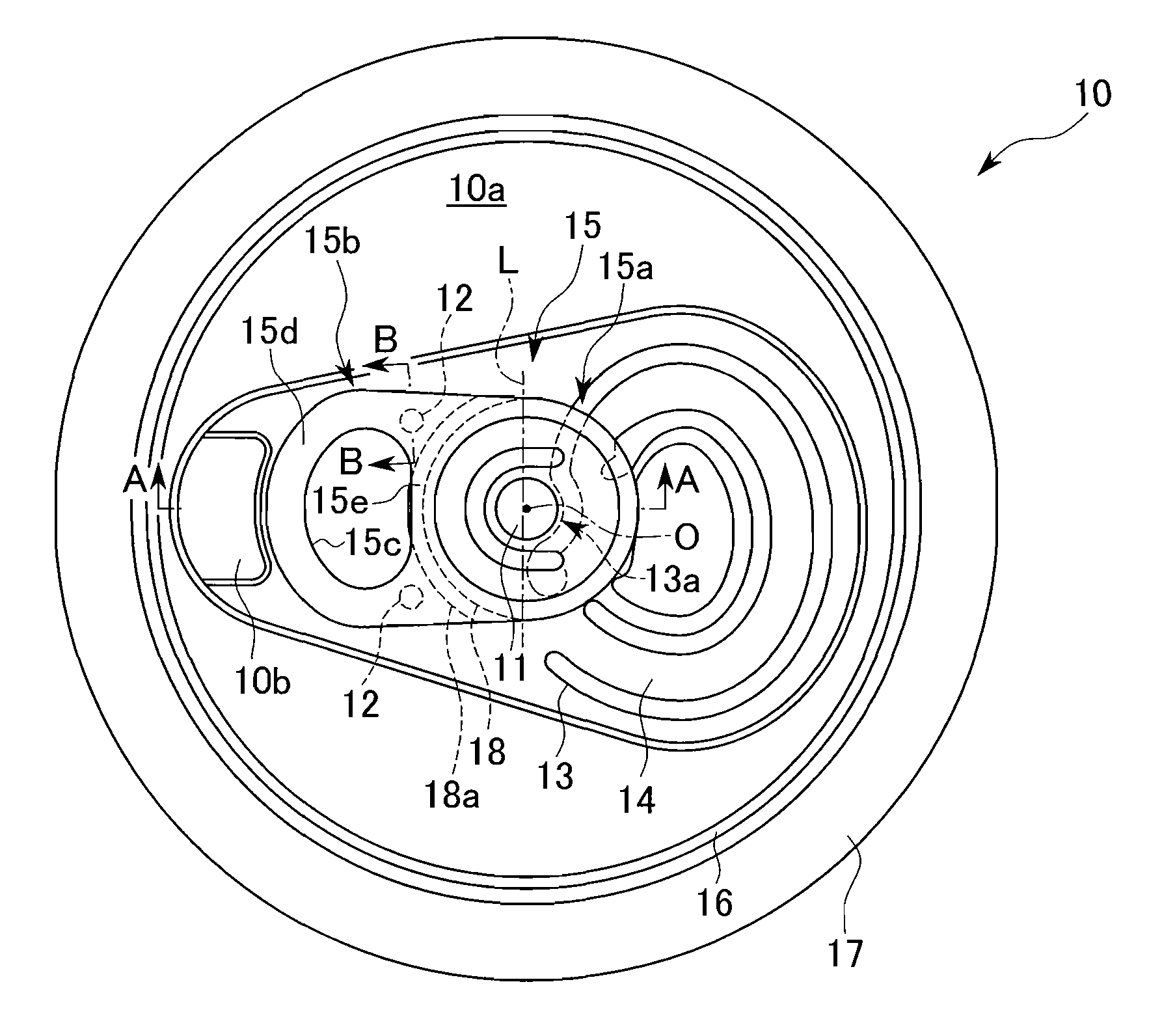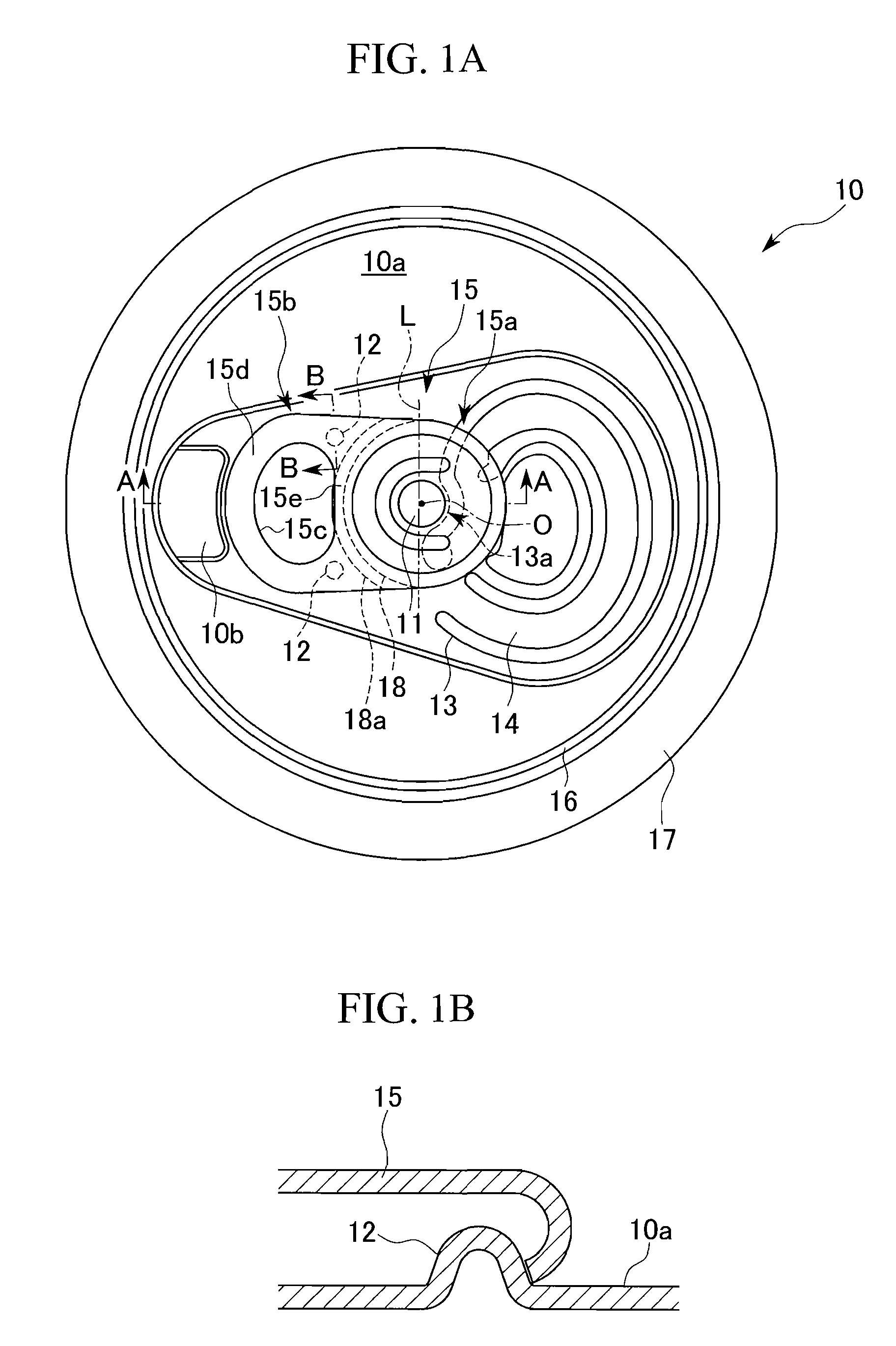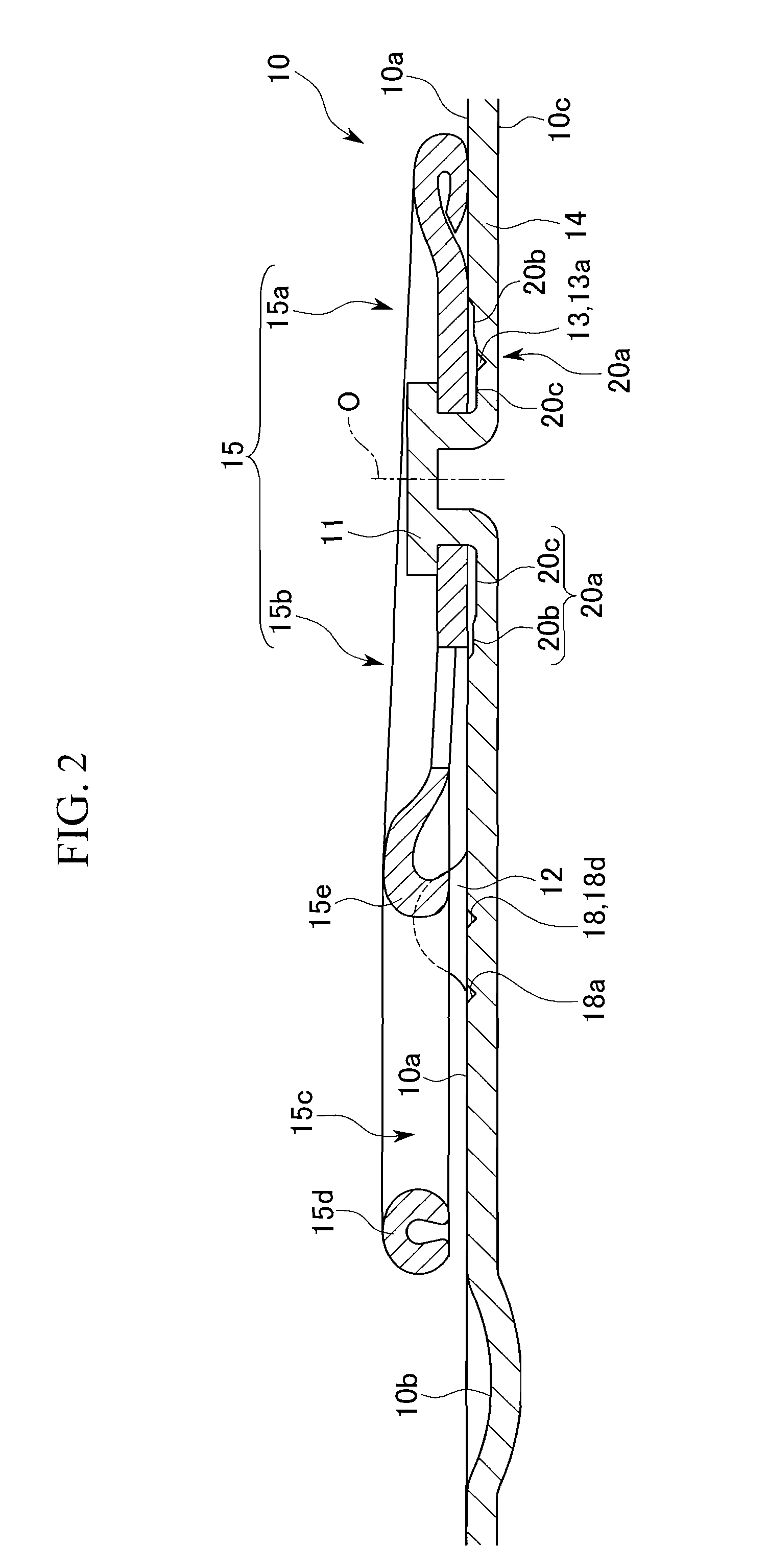Can lid
a can lid and lid technology, applied in the field of can lids, can solve the problems of difficult to provide favorable transferring performance, difficult to pull up the pull-up part successfully, deterioration of stacking performance, etc., and achieve the effect of reducing preventing the deterioration of the compressive strength of the can lid, and preventing the slant of the riv
- Summary
- Abstract
- Description
- Claims
- Application Information
AI Technical Summary
Benefits of technology
Problems solved by technology
Method used
Image
Examples
Embodiment Construction
[0061] An explanation will be given about embodiments of the present invention below, referring to the drawings.
[0062] FIGS. 1 to 4 are drawings each of which shows the schematic constitution of a can lid illustrated as an embodiment of the present invention.
[0063] This can lid is made of pure aluminum or aluminum alloy, and is constituted from a rivet 11 and a dimple 12 which are formed gibbously and upwardly, and an opening part 14 demarcated by a main score 13, on a can lid main body 10a (referred to as “upper surface 10a”, below) 10a of a can lid main body 10, in which the dimple 12 and the opening part 14 are arranged so as to be opposed to each other across the rivet 11. That is, the dimple 12 is arranged on the opposite side to the opening part 14 with the rivet 11 therebetween, and a tab 15 which is fixed to the rivet 11 in such a way that one end thereof 15a overlaps the opening part 14, whereas the other end thereof 15b overlaps the dimple 12.
[0064] Moreover, on the per...
PUM
 Login to View More
Login to View More Abstract
Description
Claims
Application Information
 Login to View More
Login to View More - R&D
- Intellectual Property
- Life Sciences
- Materials
- Tech Scout
- Unparalleled Data Quality
- Higher Quality Content
- 60% Fewer Hallucinations
Browse by: Latest US Patents, China's latest patents, Technical Efficacy Thesaurus, Application Domain, Technology Topic, Popular Technical Reports.
© 2025 PatSnap. All rights reserved.Legal|Privacy policy|Modern Slavery Act Transparency Statement|Sitemap|About US| Contact US: help@patsnap.com



